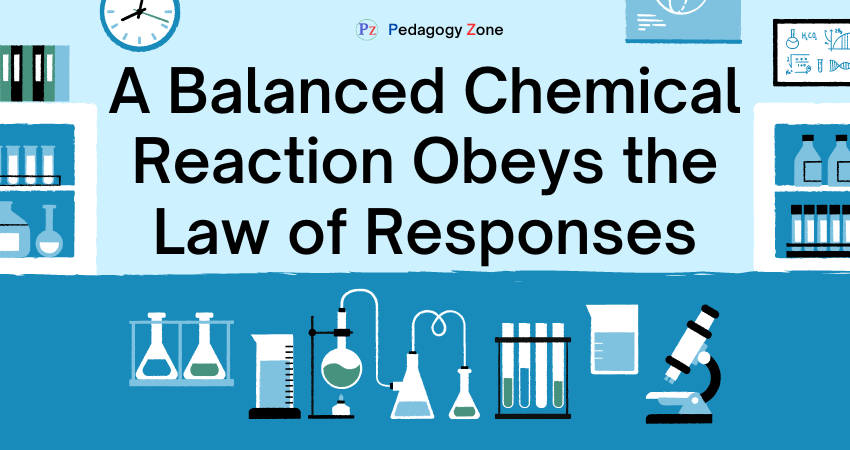Chemical reactions are fascinating processes that form the foundation of chemistry, where substances undergo changes to form new products. One of the most fundamental principles governing these reactions is the Law of Conservation of Mass. This law states that in a closed system, mass is neither created nor destroyed during a chemical reaction. In simpler terms, the total mass of the reactants must equal the total mass of the products. This principle is at the core of balancing chemical equations, a critical concept in chemistry.

Understanding the Law of Conservation of Mass
The Law of Conservation of Mass was first formulated by Antoine Lavoisier, a French chemist, in the late 18th century. Lavoisier demonstrated that even though substances might change their form or state during a chemical reaction, the total mass remains constant. This observation laid the groundwork for modern chemistry and established the importance of balanced chemical equations.
A balanced chemical equation ensures that the number of atoms of each element is the same on both sides of the equation. This reflects the reality that atoms are not lost or gained; they are simply rearranged.
The Process of Balancing Chemical Equations
Balancing chemical equations involves ensuring that the number of atoms for each element involved in a reaction is the same on both sides of the equation. This process follows a systematic approach:
Write the Unbalanced Equation: Begin by writing the correct formulas for all reactants and products. For example, the unbalanced equation for the combustion of methane (CH₄) is:
CH4 + O2 → CO2 + H2O
Count the Number of Atoms of Each Element: Tally the number of atoms for each element on both sides of the equation. Initially, the equation may have different numbers of atoms of certain elements on each side.
Add Coefficients to Balance the Atoms: To balance the equation, place coefficients (numbers) in front of the chemical formulas to ensure that the number of atoms for each element is the same on both sides. For methane combustion, the balanced equation is:
CH4 + 2O2 → CO2 + 2H2O
Here, 2 molecules of oxygen (O₂) are needed to ensure that the number of oxygen atoms is the same on both sides of the equation.
Check Your Work: After adding coefficients, recount the atoms of each element to ensure the equation is balanced.
Why is Balancing Chemical Reactions Important?
- Reflects Reality: A balanced chemical equation provides a true representation of what happens during a chemical reaction. It shows how atoms are rearranged and conserved, reflecting the physical reality of the reaction.
- Calculations in Chemistry: Balancing equations is essential for quantitative chemistry. It allows chemists to calculate the amounts of reactants needed and the expected yields of products. This is crucial in fields like industrial chemistry, where precise measurements are necessary for efficient and cost-effective production.
- Understanding Reaction Stoichiometry: Stoichiometry, the study of the quantitative relationships between reactants and products in a chemical reaction, relies on balanced equations. Without balancing, stoichiometric calculations would be impossible.
- Predicting Reaction Outcomes: Balanced equations help predict the outcomes of reactions, including which products will form and in what quantities. This is particularly important in chemical synthesis, pharmaceuticals, and environmental chemistry.
Real-World Applications
The principles of balanced chemical reactions and the Law of Conservation of Mass are applied in various real-world scenarios, including:
- Environmental Science: Understanding how pollutants react in the atmosphere helps scientists devise strategies to reduce environmental damage.
- Pharmaceutical Industry: Chemists must know the exact amounts of reactants needed to synthesize drugs without wasting resources or creating dangerous by-products.
- Energy Production: Balancing equations is vital in processes like combustion, where the precise mixture of fuel and oxygen is needed for efficient energy production.
A balanced chemical reaction is more than just a neat arrangement of symbols and numbers; it is a powerful tool that obeys the Law of Conservation of Mass. This law, one of the cornerstones of chemistry, ensures that mass is conserved in all chemical reactions. By understanding and applying this principle, chemists can predict and control the outcomes of reactions, making chemistry an exact and invaluable science.
Which Equation Obeys the Law of Conservation of Mass
An equation that obeys the law of conservation of mass is one where the mass of the reactants equals the mass of the products.
A simple example is:
H₂ + O₂ → H₂O (incorrect, unbalanced)
Correct Balanced Equation: 2H2 + O2 → 2H2O
In this balanced equation, there are four hydrogen atoms and two oxygen atoms on both sides, satisfying the law of conservation of mass.
| Read More Topics |
| How to make electrochemical etching stencils? |
| A chemist assembles the following electrochemical cell |
| Know more about organic or inorganic chemistry |





